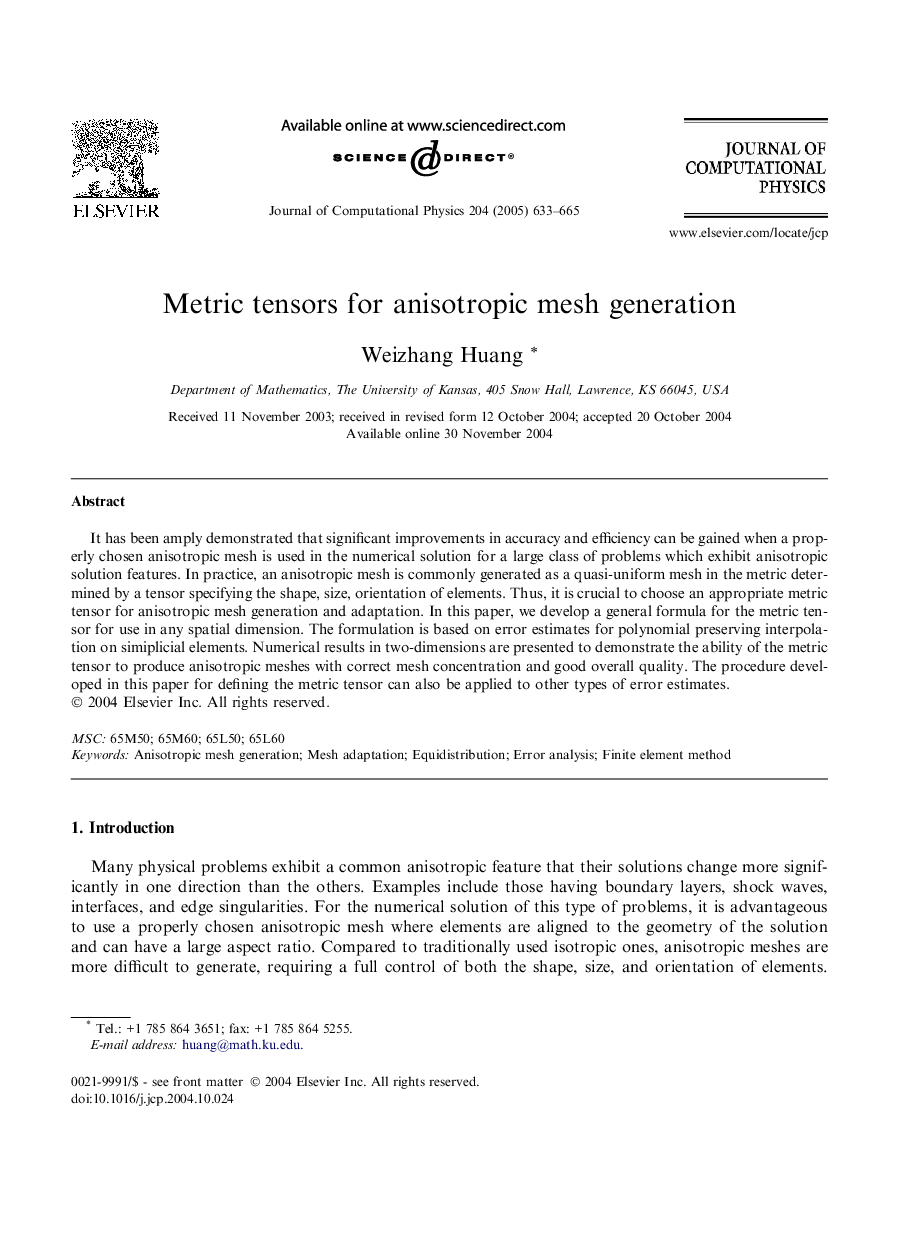| Article ID | Journal | Published Year | Pages | File Type |
|---|---|---|---|---|
| 10356420 | Journal of Computational Physics | 2005 | 33 Pages |
Abstract
It has been amply demonstrated that significant improvements in accuracy and efficiency can be gained when a properly chosen anisotropic mesh is used in the numerical solution for a large class of problems which exhibit anisotropic solution features. In practice, an anisotropic mesh is commonly generated as a quasi-uniform mesh in the metric determined by a tensor specifying the shape, size, orientation of elements. Thus, it is crucial to choose an appropriate metric tensor for anisotropic mesh generation and adaptation. In this paper, we develop a general formula for the metric tensor for use in any spatial dimension. The formulation is based on error estimates for polynomial preserving interpolation on simiplicial elements. Numerical results in two-dimensions are presented to demonstrate the ability of the metric tensor to produce anisotropic meshes with correct mesh concentration and good overall quality. The procedure developed in this paper for defining the metric tensor can also be applied to other types of error estimates.
Keywords
Related Topics
Physical Sciences and Engineering
Computer Science
Computer Science Applications
Authors
Weizhang Huang,
